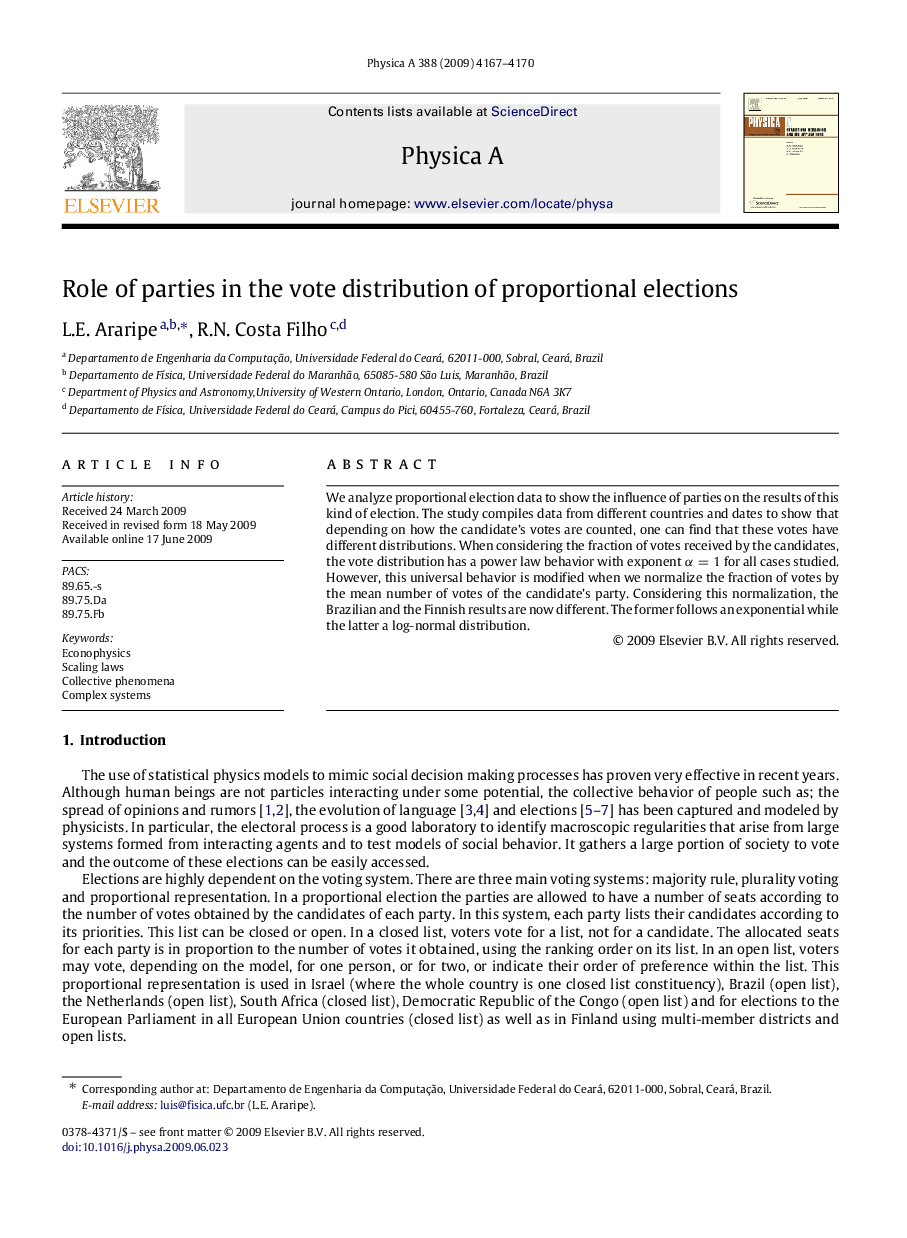| Article ID | Journal | Published Year | Pages | File Type |
|---|---|---|---|---|
| 977092 | Physica A: Statistical Mechanics and its Applications | 2009 | 4 Pages |
We analyze proportional election data to show the influence of parties on the results of this kind of election. The study compiles data from different countries and dates to show that depending on how the candidate’s votes are counted, one can find that these votes have different distributions. When considering the fraction of votes received by the candidates, the vote distribution has a power law behavior with exponent α=1α=1 for all cases studied. However, this universal behavior is modified when we normalize the fraction of votes by the mean number of votes of the candidate’s party. Considering this normalization, the Brazilian and the Finnish results are now different. The former follows an exponential while the latter a log-normal distribution.
